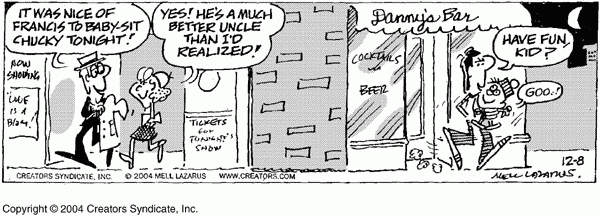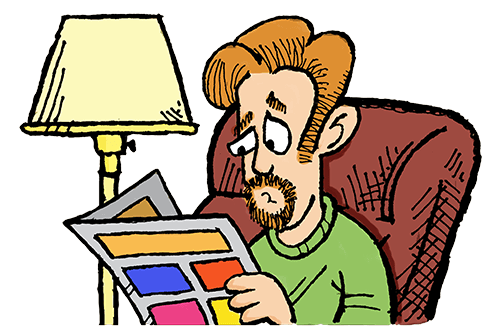Maybe they recently bought him on eBay or something
Post Content
Momma, 12/8/04

Today’s Momma is pretty much an illustration of the difference between a gag-driven strip and a character-driven strip. I’ve been reading Momma daily for the last two years, and this is the first time I’ve noticed that Thomas and his cooking-impaired wife have a child, which I’m guessing is because they didn’t before the idea for this joke came along. I mean, come on: wouldn’t longer and more frequent visits with her only grandchild be one of the primary demands dominating Momma’s cavalcade of passive aggression?
On the other hand, maybe she’s scared of little Chucky, since they appear to be roughly the same size.
Anyway, I hope the happy parents enjoy their night out seeing the new smash hit film Love is a Blah.


